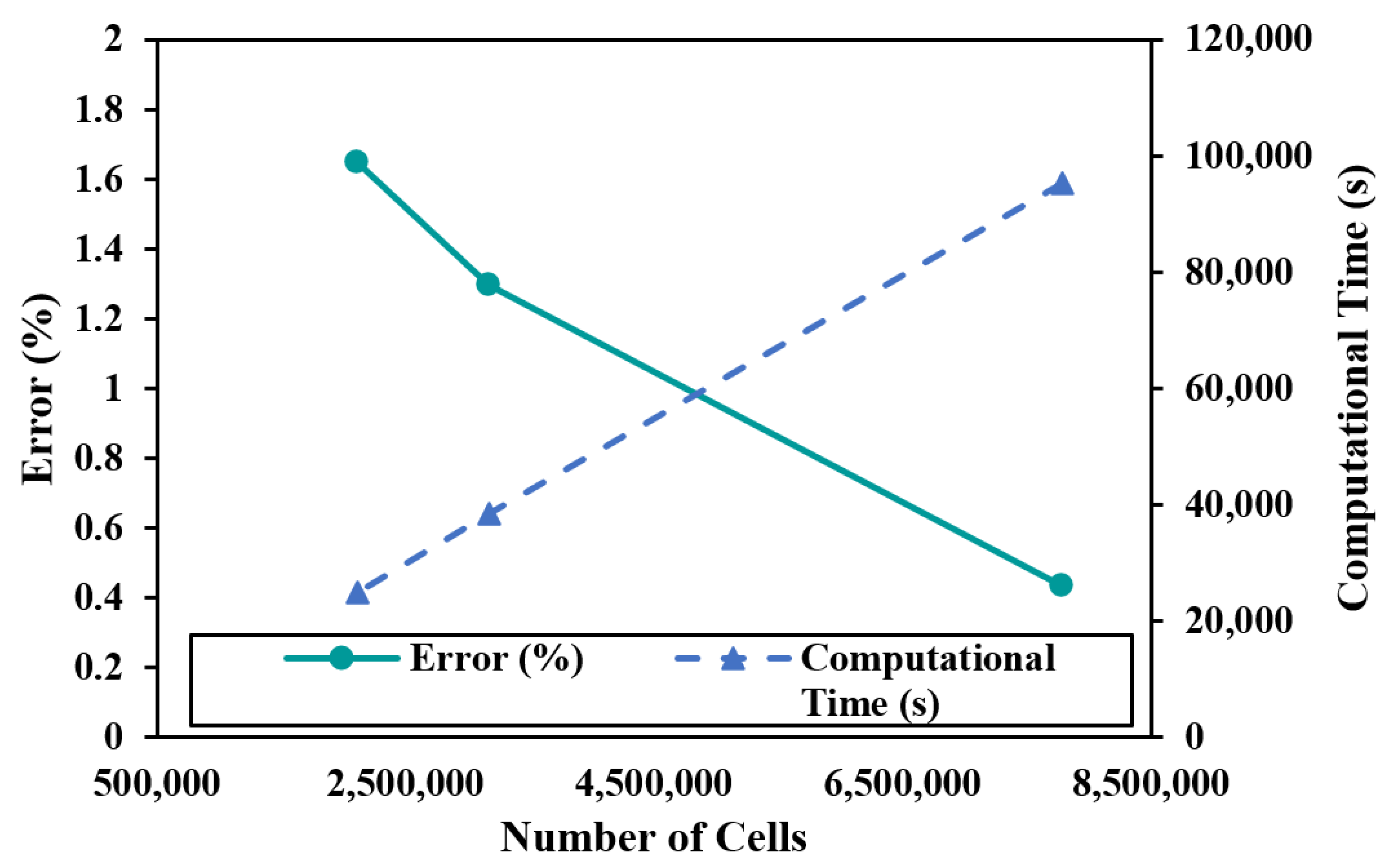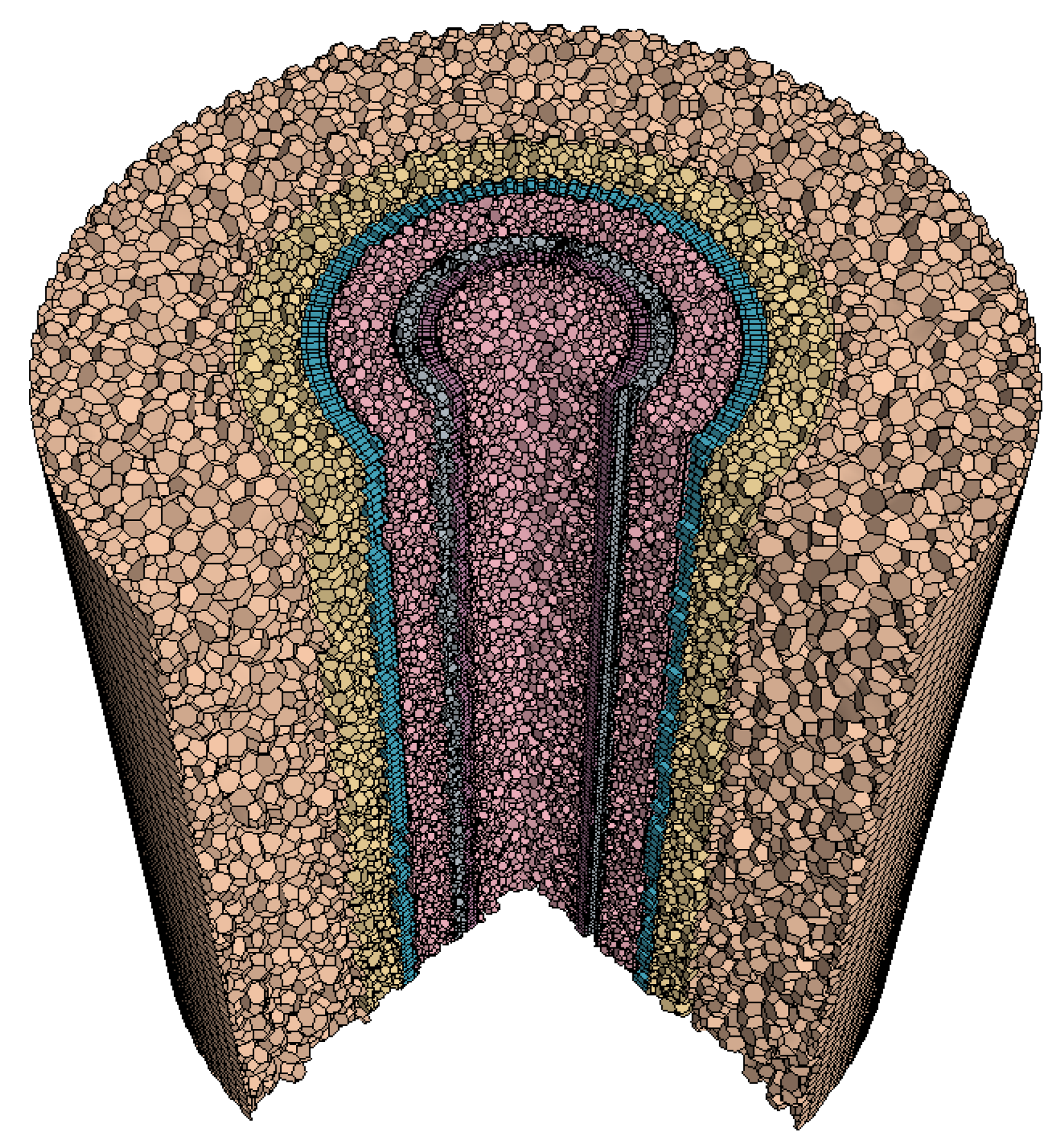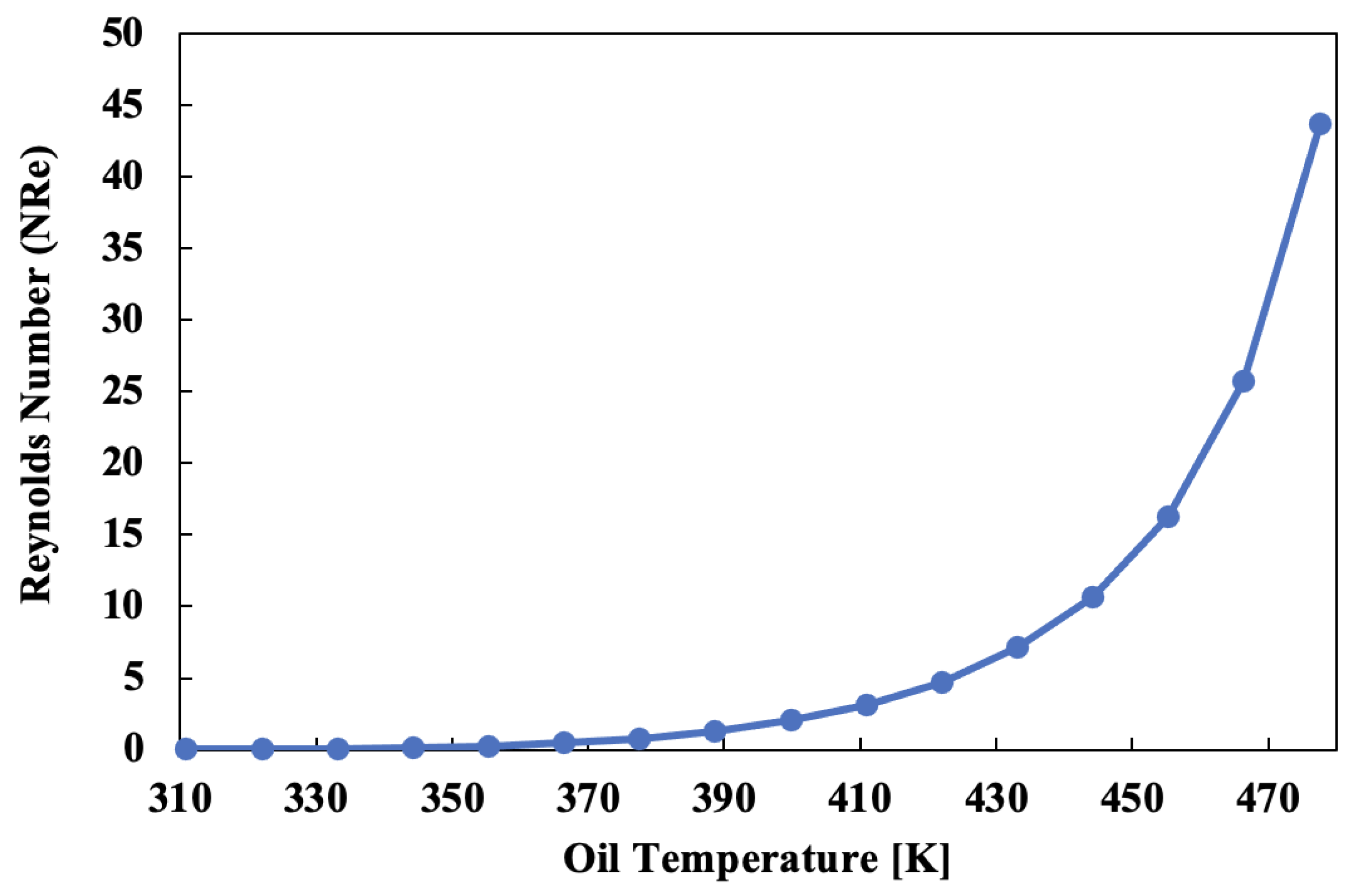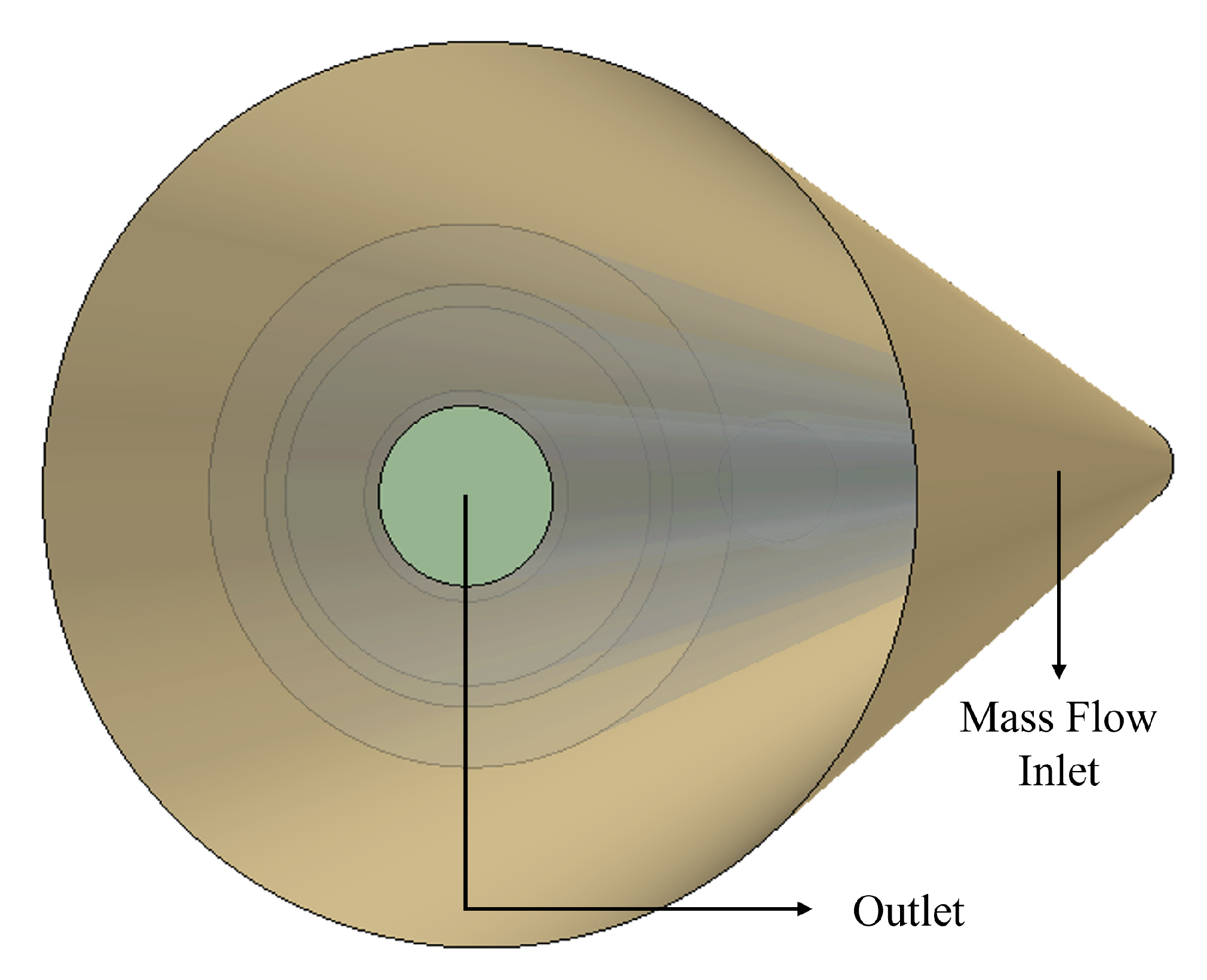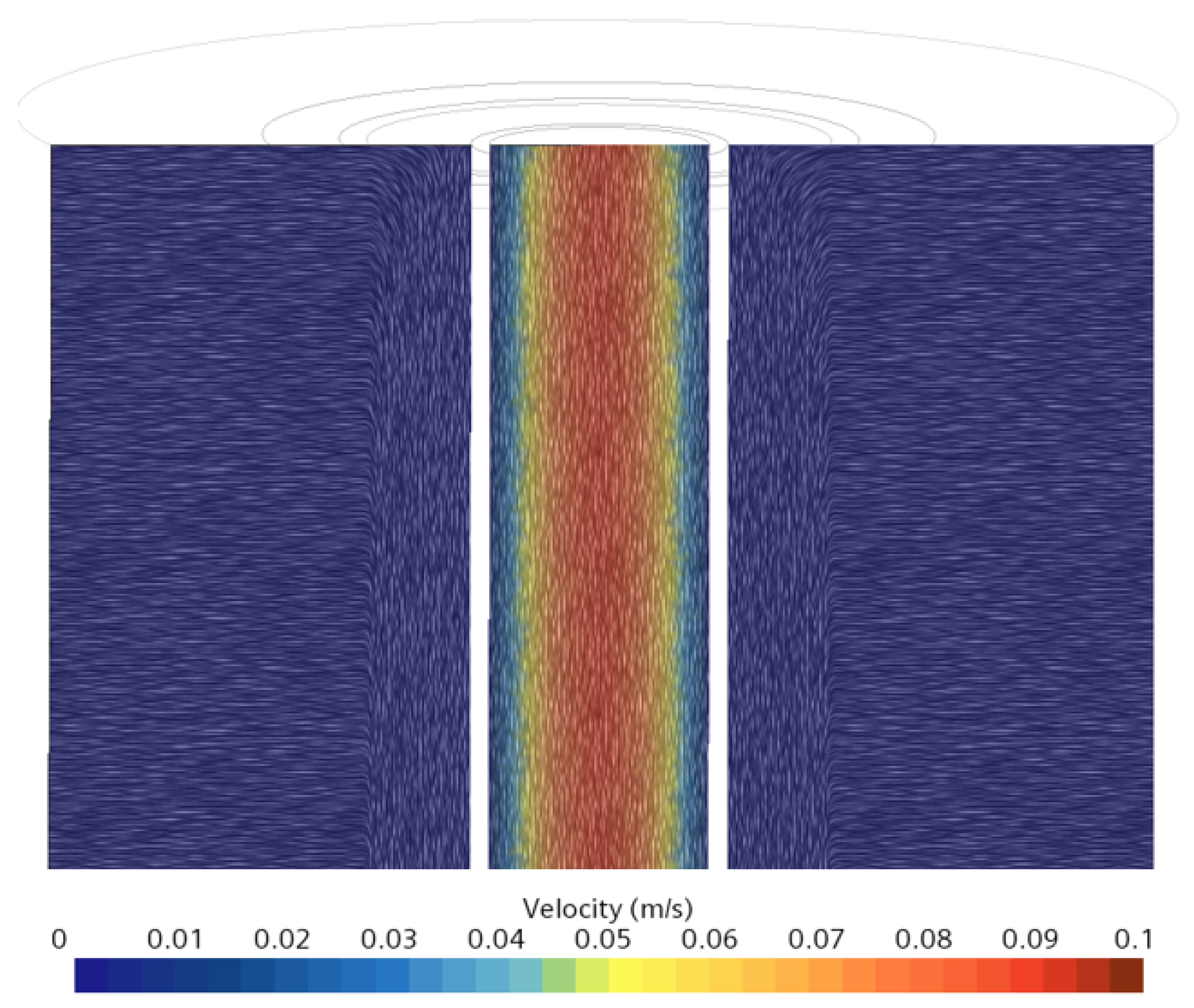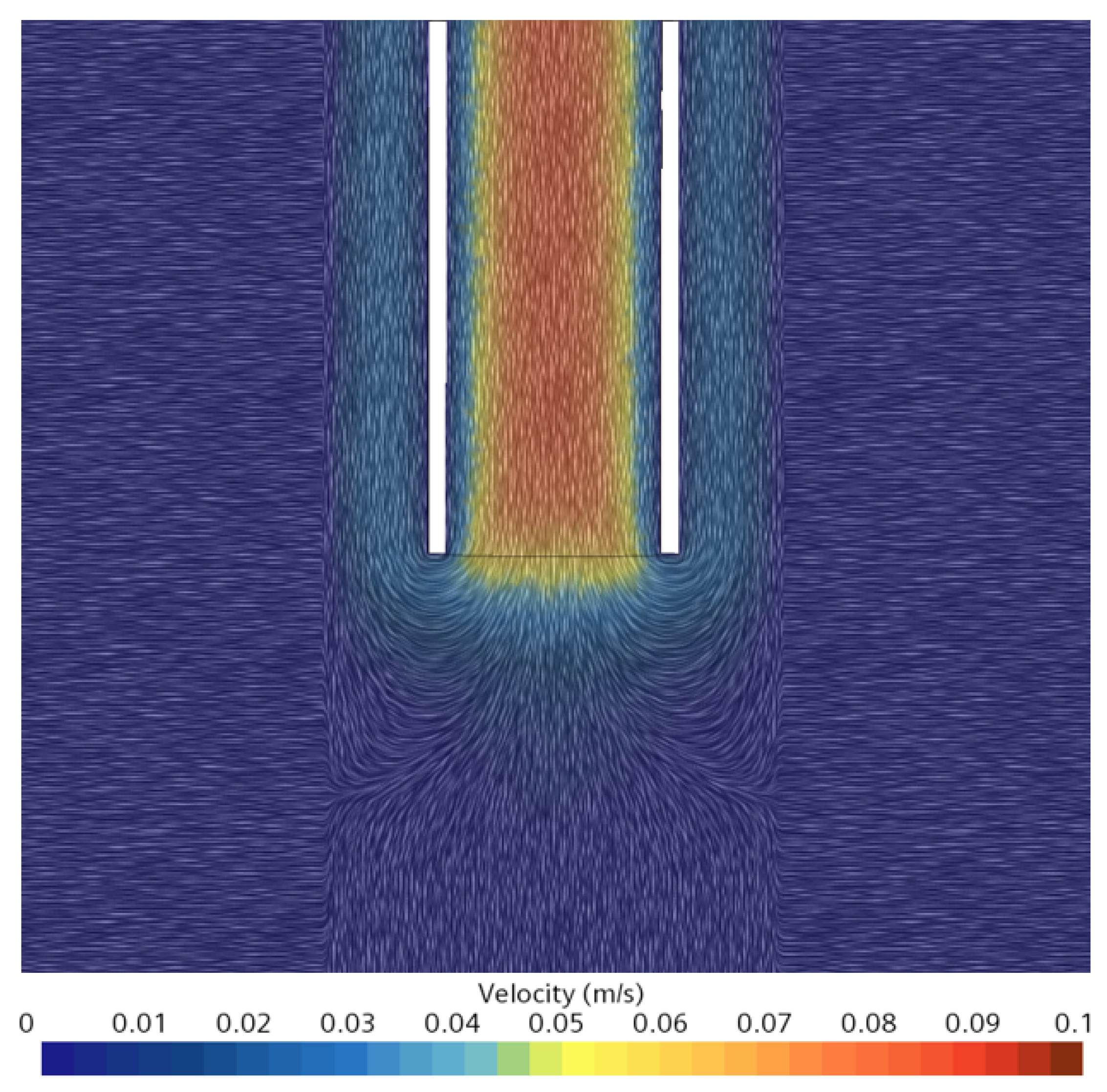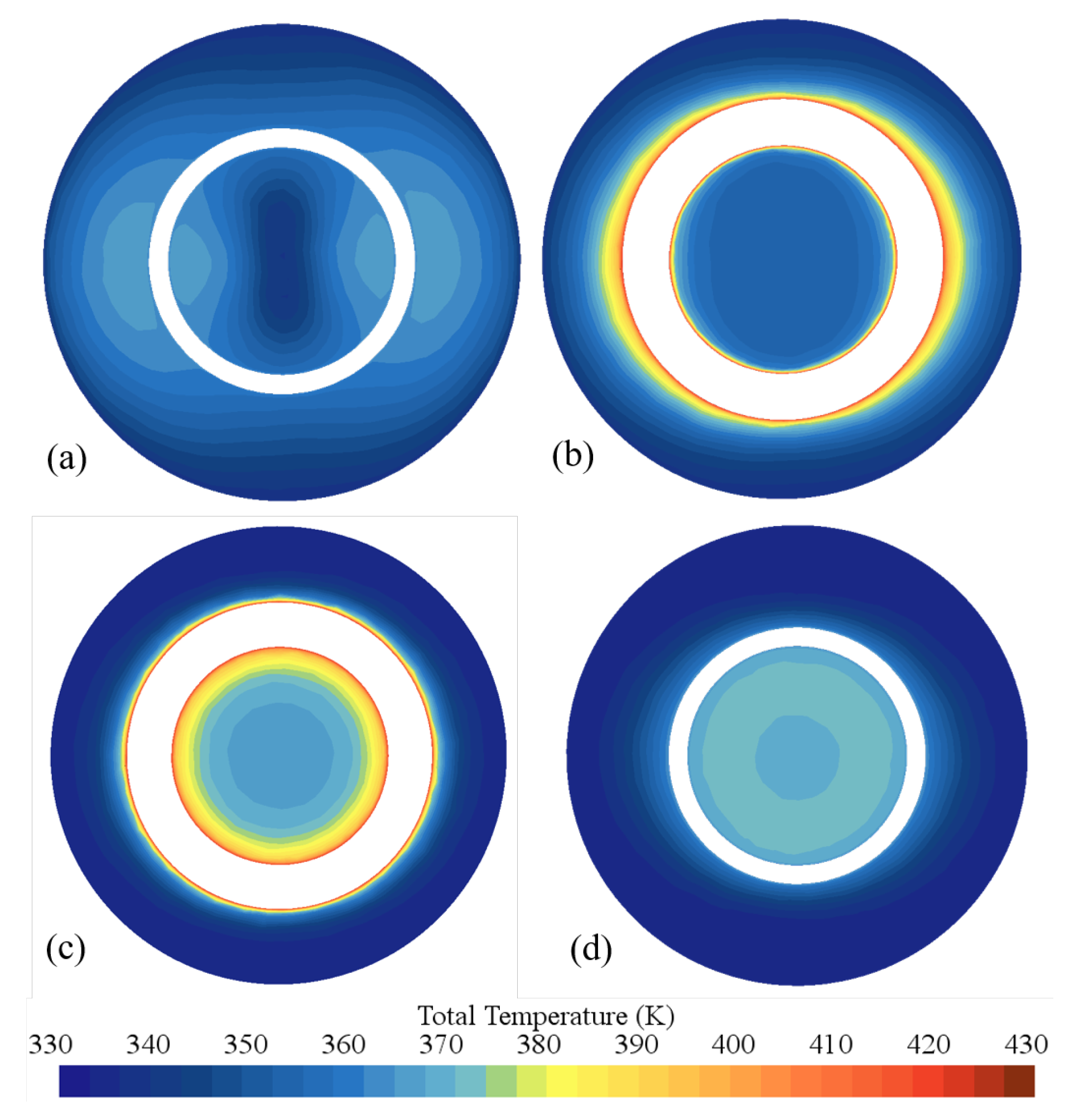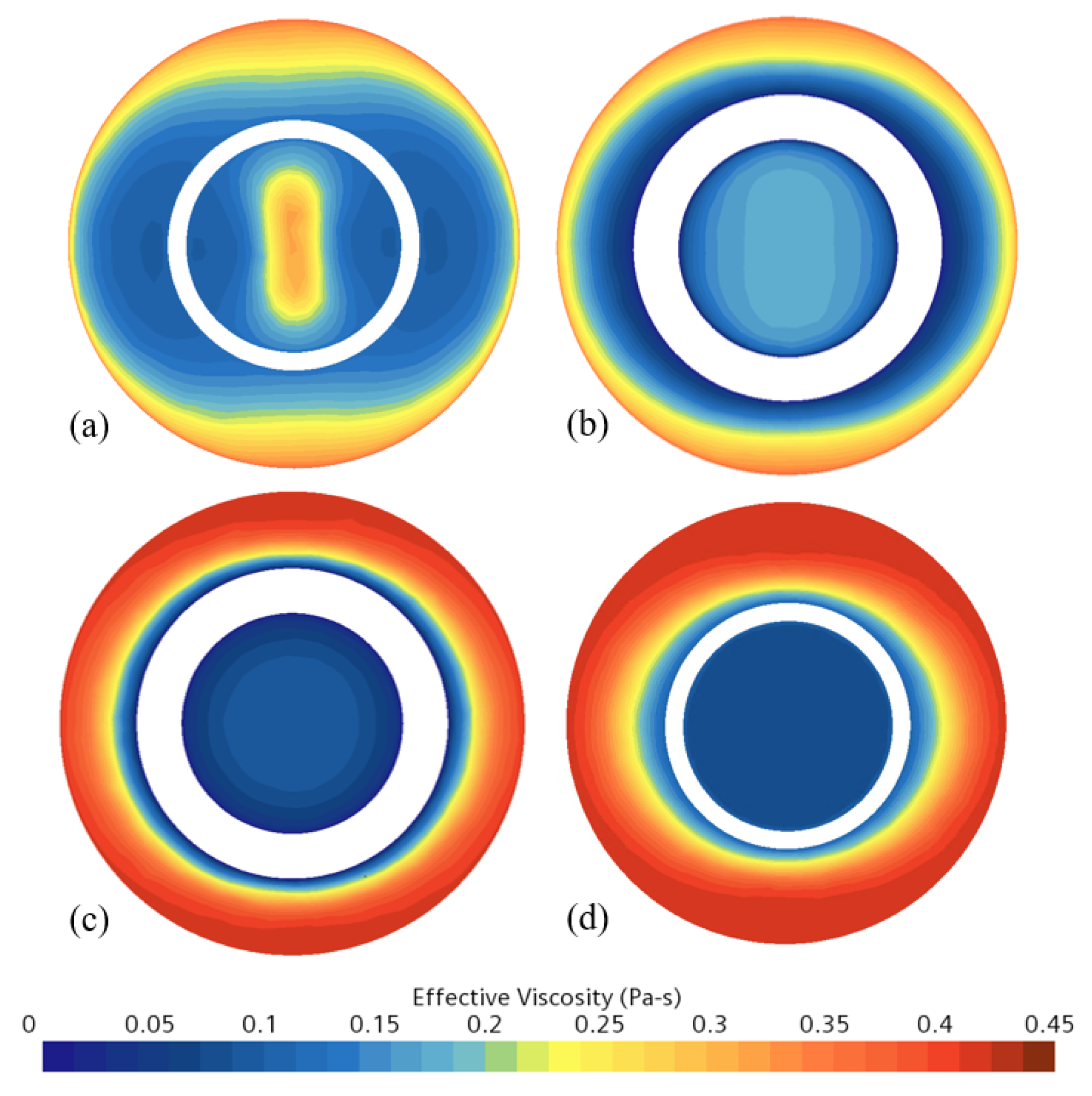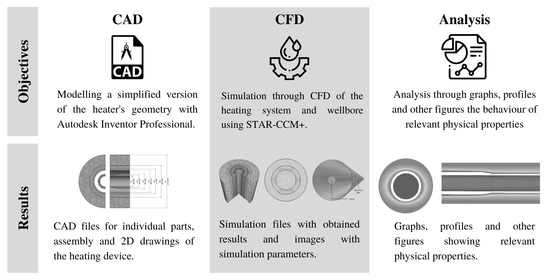2.1. Geometry Modelling and Mesh Generation
The geometry model was generated in detail using the software Autodesk Inventor Professional 2021 [
11] based on the geometry provided by the BCPGroup and the system proposed by Sharma et al. [
12].
Wellbore penetration was specified as 9.14 m (30 ft) by BCPGroup; however, to simplify well perforating and crude-oil inlet into the annulus, reservoir, cement, and casing regions were extended. This extension was calculated as three times the diameter of the cross-section, 1.14 m (3.75 ft).
Table 1 summarizes axial specification and
Figure 1 details visually the wellbore’s axial section. Inner and outer diameters for each cross section are specified in
Table 2 and the wellbore’s cross-section is detailed visually in
Figure 2. Finally, the heater section specification is detailed in
Table 3.
The internal volume of the CAD model was extracted in CFD software STAR-CCM+ v16.06.010-R8 [
13], obtaining the fluid region. Models used for mesh generation include [
14]:
Three prism layers with a stretching factor of 1.5 were located in near-wall regions to properly capture the hydrodynamic layer. Three thin layers were generated for thin geometries, where good quality cells are required to capture the solid material thickness. The online tool Volupe grid calculator [
15] was used as a guide for establishing mesh parameters.
To determine the ideal number of cells for the mesh, based on computational cost and accuracy, a mesh independence test (MIT) was carried out [
16]. Three different mesh sizes were evaluated (coarse, base, and fine), maintaining other parameters relative to base size.
The top annular temperature was chosen as the variable for mesh comparison, due to the existence of experimental data for this value. For the MIT, the error percentage for top annular temperature was calculated for each mesh. Results for error and computational time are presented in
Figure 3.
As expected,
Figure 3 showed that an increase in the number of cells represents an increase in results accuracy. However, the computational time is compromised with an increase in the number of cells. As seen in
Figure 3, the most significant error reduction happens in the transition from the base mesh to the fine mesh (0.21%); however, computational time for the fine mesh is almost three times that of the base mesh. Even though error percentages are relatively low for all meshes, the fine mesh, with ∼7.8 million cells, represents the best option if adequate computational resources are available, reason why this mesh was selected for the simulations. Finer meshes were carried out; however, no significant variations were observed in comparison with the fine mesh. In the case of limited computational resources, no significant difference was found as of using the coarse or base mesh using top annular temperature as the variable for mesh comparison.
The main parameters for the chosen mesh are detailed in
Table 4 and
Figure 4 shows the final 3D mesh generated.
2.2. Physical Models Specification
For this study, the system was modeled in a steady state. For fluid, single phase, segregated flow, laminar flow, and constant density were assumed.
Based on experimental oil field viscosity
, BCPGroup calculated the Reynolds number correlation at several temperatures using Equation (
1). Results are shown in
Table S1 of Supplementary Material. A plot for Reynolds number dependent to temperature is shown in
Figure 5.
Characteristic length for Reynolds number calculation is specified as 15.941 cm (6.276 in), the diameter of the annular section of the wellbore. Velocity (
v) was calculated with Darcy’s Law for flow in a porous medium, as shown in Equation (
2), where
q represents the Darcy flux,
Q the oil’s mass flow rate,
A the cross sectional area and
the porosity of the reservoir [
14].
Oil density was modeled as constant with temperature, and it was calculated on the base of oil ° API and through its specific gravity as shown in Equations (
3) and (
4) [
17].
As shown in
Figure 5, even if the Reynolds number varies with temperature in the performed analysis, the flow margin does not change, keeping a laminar flow. Due to this, the oil’s heat transfer coefficient is considered constant.
Since dynamic viscosity is one of our properties of interest, it was modeled as temperature dependent and specified by a 7th-degree polynomial, obtained by a polynomial curve fitting of experimental data provided by the BCPGroup. MATLAB [
18]
function with centering and scaling [
19] was used to obtain the polynomial coefficients. Equation (
5) shows the polynomial obtained where
units are [Pa
s] and
T units are [K].
Properties for crude-oil and reservoir are presented in
Table 5.
Regions outer to the annulus (casing, cement, and reservoir) were established as porous regions with porosity and tortuosity defined as in
Table 5 to simplify well perforating and crude-oil inlet into the annulus. Solid thermal conductivity was defined for each of these regions. A summary of all regions with their type and relevant properties is presented in
Table 6.
Porous regions mathematical modeling is based on porosity (
), a physical property defined as the ratio of the volume of pores to the volume of bulk rock [
20], it may also be defined as the ratio of the volume (
) that is occupied by the fluid and the total volume (
V) of a cell [
14], as shown in Equation (
6). Porous media modeling uses porosity and adds appropiate source terms to the governing equation [
14].
For porous media flow, the momentum equation contains a term that accounts for the resistance to the flow imparted by the porous medium. This term (f
) is defined in terms of superficial velocity (v
) and the porous resistance tensor (P) as shown in Equation (
7) [
14]. Superficial velocity (v
) is an artificial flow velocity that assumes that neglects the solid portion of the porous medium and accounts for the increase in physical velocity as flow enters a porous media due to the reduction of open area available to the flow. Superficial velocity is related to physical velocity as shown in Equation (
8). On the other hand, the porous resistance tensor (P) consists of two components as shown in Equation (
9), P
known as viscous resistance tensor and P
known as inertial resistance tensor [
14].
Pinilla et al. [
21] previously calculated the viscous and intertial porous resistances for heavy oil reservoirs using a mathematical regression for the pressure drop against flowrate satisfying Equation (
9), known as the Dupuit-Forchheimer equation. These values are presented in
Table 7.
Two main boundary conditions were established, the first one as an outlet on the corresponding fluid outlet surface, the second one as a mass flow inlet with mass flow rate specified in
Table 5 on the corresponding outer surface of the reservoir porous region. The location of these surfaces in the geometry is shown in
Figure 6.
Lastly, for heat transfer, a thermal specification is defined for the interface formed by the heating elements (6 lineal resistances) and its casing. The thermal specification in this boundary is defined as temperature, meaning that the boundary temperature as a scalar profile is entered accordingly to the heater static temperature established in
Table 3.
For heat transfer across the geometry, Fourier’s law is applied for heat conduction, as shown in Equation (
10) where
[W/m
] is the local heat flux vector,
k [W/mK] is the thermal conductivity of the material, and
[K/m] is the temperature gradient.
Newton’s law of cooling governs convective heat transfer at a surface, as shown in Equation (
11) where
is the local heat flux vector,
h is the local convective heat transfer coefficient,
is the surface temperature and
is a characteristic temperature of the fluid moving over the surface.
Finally, for conjugate heat transfer (CHT) between fluid and solid regions at a contact interface, two boundaries are defined: Boundary
in the fluid region and Boundary
in the solid region. Based on energy conservation, total heat flux is conserved across the interface, as shown in Equation (
12) where
is the heat flux from the fluid through Boundary
,
is the heat flux leaving through Boundary
into the solid and
is the heat source within the interface (if applicable).
Heat fluxes can be expressed in terms of linearized heat flux coefficients as shown in Equations (
13) and (
14) for Boundary
and Boundary
respectively. Where
and
D are the linearized heat flux coefficients.
are the cell temperatures next to Boundary
and Boundary
respectively and
are the interface temperatures on the fluid side (Boundary
) and on the solid side (Boundary
) respectively.


